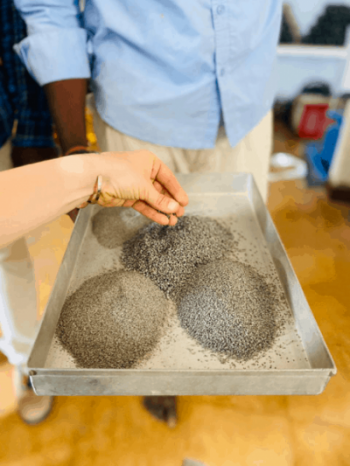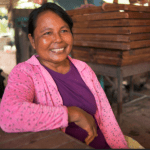Optimizing Incremental Building: Why the Answer To Decent, Affordable Housing for All Is Hidden in Plain Sight
As COVID-19 ravages developing countries, it has laid bare stark inequalities, with socially and economically marginalized households disproportionately facing negative health and economic consequences. Even before COVID-19 struck, the scale of the housing challenge was enormous, with an estimated 1.6 billion people worldwide lacking adequate shelter.
Many governments, especially those of developing countries, will readily admit that they cannot solve the problem alone. In 2014, a McKinsey report on the global housing affordability challenge estimated that closing the housing affordability gap could require as much as $650 billion per year, or approximately one percent of global gross domestic product. The enormity of this housing gap highlights why this challenge cannot be met simply with government subsidies and government-led housing programs.
When governments do step in, government-led developments tend to favor large-scale infrastructure projects with highly visible results at a scale that can attract the interest of the private sector as suppliers or partners. In the Philippines, for example, the government’s Build, Build, Build program, which launched in 2017, is almost exclusively focused on roads, bridges and other transport infrastructure The program siphons off resources (materials, labor, finance) toward big infrastructure, ultimately reducing the government’s attention and budget with regards to the housing deficit. Large- and mid-sized developers are also financially motivated to focus on such large-scale projects instead of taking an interest in the individual housing market, and government programs do not typically offer incentives for the industry to engage in small-scale affordable housing construction.
Conversely, when government interventions do focus on individual housing, some government-led housing programs do not directly engage in construction, but offer land and subsidies to encourage it. However, the subsidies alone are often not sufficient to cover the costs – and the programs overlook the needs of low-income households for affordable access to financing, quality materials and construction services that would enable them to build better housing.
For all these reasons, the bulk of housing construction and improvement is often left to individual families and communities to be executed through the informal sector, since families lack access to formal financing channels and information on how to build properly. In fact, the informal sector is estimated to build approximately 70% of all urban housing in the developing world, making it the leading actor in the housing supply chain. Through the informal sector, many low-income families build their homes incrementally over the years, as they are able to afford it.
The overlooked role of incremental builders
While a huge percentage of homebuilders around the world build incrementally, low-income incremental builders are the invisible segment. They are overlooked by the private sector and government because they are viewed as too difficult to engage with, and they are unsupported by existing home financing modalities.
In theory, incremental construction is done at a manageable pace – but in practice, it means that the largest asset that people will ever invest in ends up poorly constructed. Research by Habitat for Humanity’s Terwilliger Center for Innovation in Shelter shows that low-income homebuilders claim that they value quality materials and workmanship, but their purchasing patterns reflect a different reality. Constrained by the amount of cash they have available at the time of their homebuilding project, incremental builders will sometimes make sub-optimal choices in design, planning, materials and workmanship. In the Philippines, for example, homebuilders might buy an inexpensive roof that will need to be replaced in 10 years, instead of spending 20% more on a weather-resistant roof that will last 15 years longer.
Availability, accessibility and use
In light of these challenges, the affordable housing sector needs innovative solutions. The Terwilliger Center takes a pragmatic approach to this problem by asking what can be done to improve the incremental housing process by making small but substantial changes to existing market practices. To that end, approaches used by other development sectors can be applied to incremental homebuilding. For example, three of the main pillars of food security—availability, access and utilization—can also be leveraged in the incremental homebuilding sector. Further, learning from the successes of the water, sanitation and hygiene sector in bringing about lasting behavior change, the Center is looking at how low-income homebuilders, masons, laborers and other market actors can be better supported to build incrementally.
A human-centered systems approach to housing
To do this, the Terwilliger Center works from two angles. First, we look through a market systems lens at how the system functions, determining who the players are, and assessing the relationships and power dynamics between them. Then, we couple those findings with a design-thinking lens, which entails zooming in, prototyping and understanding the end-customer. Marrying systems-thinking with design-thinking approaches, the Center promotes human-centered systems design, a strategy that can yield innovative prototype tests.
This is a multi-pronged model focused on ensuring that families build their homes in the right sequence, reference the right design with the right materials, use laborers with the right skills, and spend the right amount. At the customer level, this could include encouraging a materials company to undertake a social media strategy that explains how families can improve their disaster resilience, or using homebuilding TV shows to send messages around quality incremental construction in an “infotainment” fashion. At the business end of the spectrum, the Terwilliger Center has developed messaging to encourage local builders to look to the incremental segment of the market for business opportunities.
Of course, the ideal scenario would be for home construction to be completed all at one time, using the best available materials and trained labor. But the reality is that incremental building is likely to continue as the dominant mode in low- and middle-income countries, and practical solutions will have to take that into account for some time to come.
Working with low-income homebuilders in ways that make sense
Given this reality, one way to shift the affordable housing paradigm away from the current model of new home construction is to find ways for the industry to work with low-income homebuilders where they are: on the land that they already own, in the area they want to live, delivering solutions that make sense to them.
Habitat for Humanity has long-standing relationships with the construction industry, through its traditional models of volunteering to build houses, which date back to the 1970s. Now we are seeking to achieve even greater impact by changing the way the housing and construction sector works for low-income people. The goal is to help developers and suppliers better understand the needs, aspirations and behaviors of incremental builders by sharing research on the issues these builders face and the drivers of their decisions.
While companies are always interested in entering new markets, they are usually unwilling to put profits at risk to do so. This is where the Terwilliger Center adds value. As a partner, we work with companies to test solutions, figure out how best to deploy them in this emerging market, and then share what has been learned with others – as well as advocating for a supportive policy environment.
Small tweaks can cause transformational change
 We’ve seen that small tweaks can be transformational. In India, for example, a ban on the use of river sand has increased demand for alternatives such as manufactured sand – but only at the upper end of the construction sector, where it has been quickly adopted. Despite the ban, in the incremental housing sector, the uptake for this new material has been slow. This is due to lower quality alternatives entering the market, along with misinformation about the quality of manufactured sand. Thus, masons have been reticent to use this product, and households have been concerned about the quality, since it does not look like river sand. Moreover, manufacturers did not know how to market manufactured sand in a way that effectively spoke to its quality and proper usage, when reaching out to laborers and households.
We’ve seen that small tweaks can be transformational. In India, for example, a ban on the use of river sand has increased demand for alternatives such as manufactured sand – but only at the upper end of the construction sector, where it has been quickly adopted. Despite the ban, in the incremental housing sector, the uptake for this new material has been slow. This is due to lower quality alternatives entering the market, along with misinformation about the quality of manufactured sand. Thus, masons have been reticent to use this product, and households have been concerned about the quality, since it does not look like river sand. Moreover, manufacturers did not know how to market manufactured sand in a way that effectively spoke to its quality and proper usage, when reaching out to laborers and households.
In July 2019, a Terwilliger Center-sponsored design sprint tried to answer the question: How might we increase the uptake of manufactured sand? One of the resulting solutions was to test the quality of sand on-site with laborers and households, using a prototype of smaller sized sieves to do a sieve analysis (or gradation test) that identifies the quality of sand based on particle size distribution in a given sample. The sand that is retained in each level of the sieve is then benchmarked against standards or acceptable levels of retention or pass-through in each sieve to decide on the quality. This is achieved by providing usage instructions along with the sieve kit. Through this, we were able to empower laborers, masons and households to purchase and use manufactured sand with confidence, while increasing their knowledge around proper use. One Terwilliger Center partner is currently branding a small batch test of these sieves to market them to masons for instructional purposes. This is a prime example of how the Center connects the construction industry and low-income homebuilders, and works to prototype and test solutions to bridge the gap between them.
These types of behavior-change initiatives may seem as incremental as the housing practices that they are addressing. But by pursuing a variety of solutions that tackle the problem from multiple angles, Habitat for Humanity’s Terwilliger Center for Innovation in Shelter is gradually moving the global housing industry in a new direction. Over time, and with the support of government and development-sector partners, we envision a future in which incremental building is optimized to provide high-quality homes to low-income families, helping to reduce the global housing gap.
Jessan Catre is Shelter Venture Lab Philippines country lead, Jennifer Cinelli-Oomen is Global Applied Innovation lead, and Scott Merrill is Global Senior Director, Programs at Habitat for Humanity’s Terwilliger Center for Innovation in Shelter.
Photo courtesy of Charles Deluvio.
- Categories
- Environment, Finance
- Tags
- housing, innovation, manufacturing



